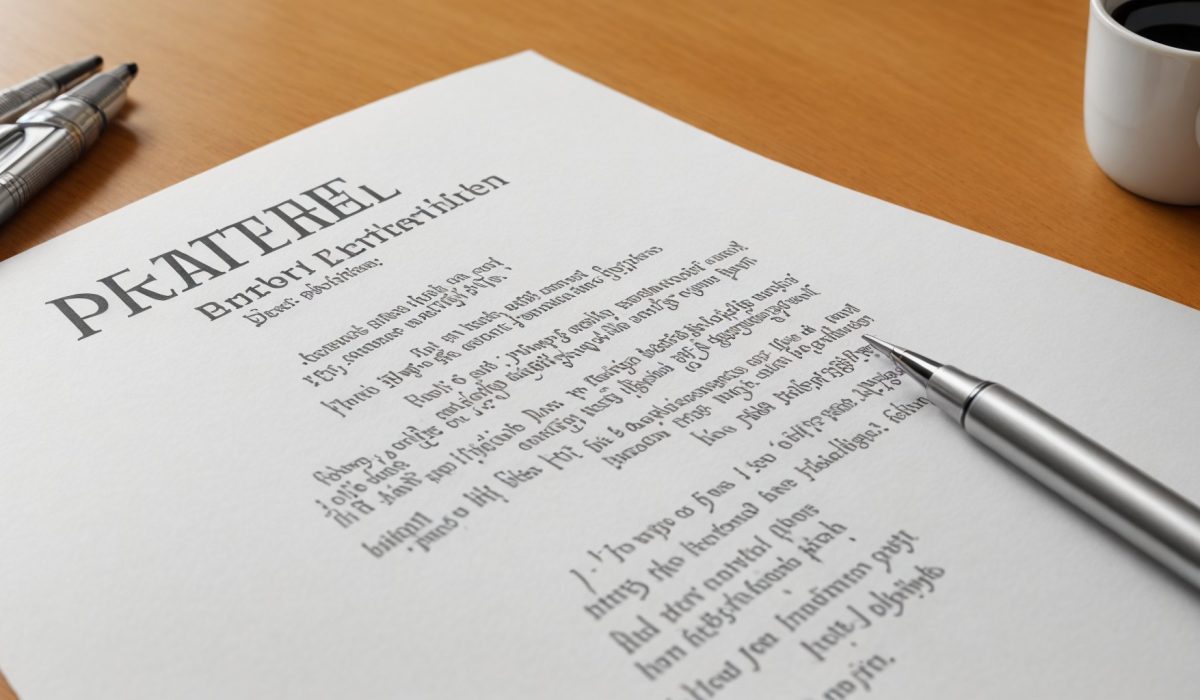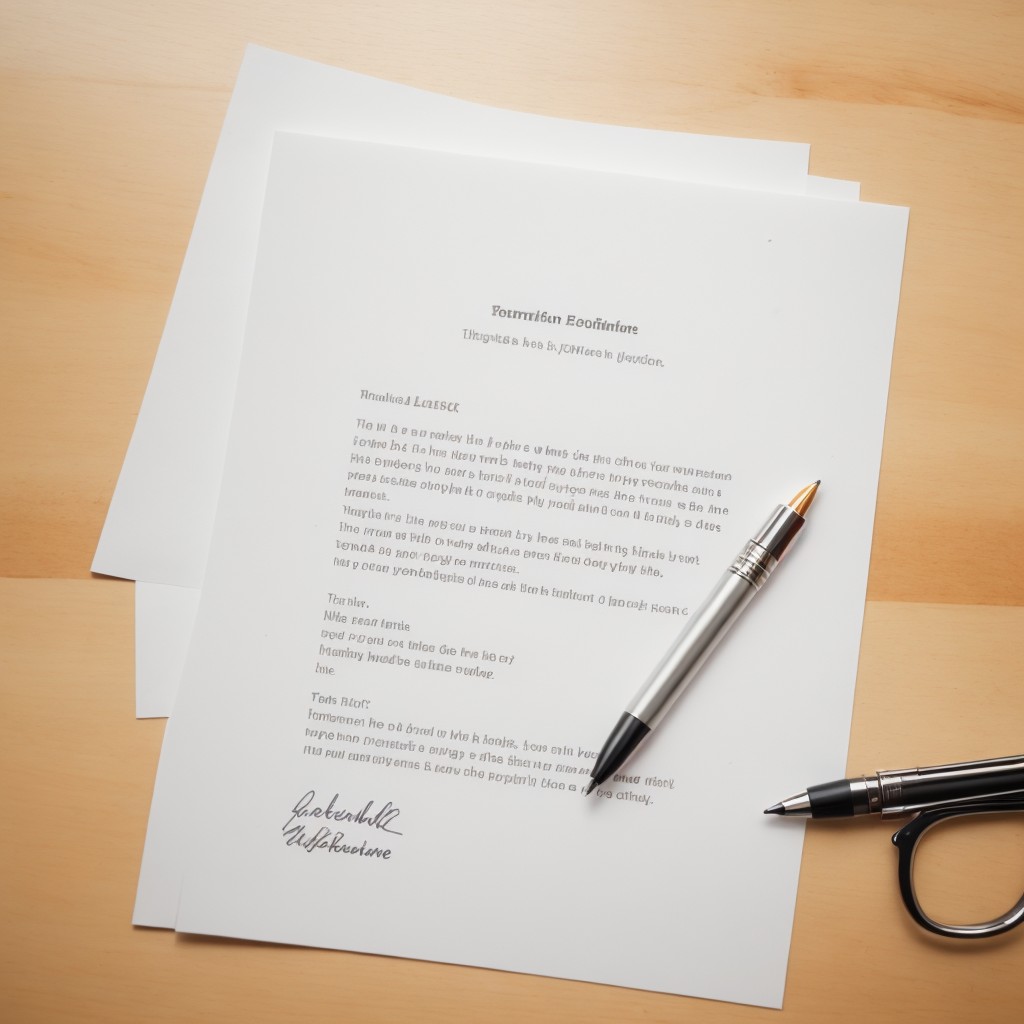Crafting the Perfect Retirement Letter: A Guide

Retirement marks a significant transition that reflects years of hard work and dedication. Preparing a retirement letter offers an opportunity to formally announce your departure and convey your sentiments as you close this chapter of your life. It is crucial to understand the importance of crafting a correspondence that succinctly states your retirement while also highlighting your experiences and contributions. Starting with a respectful and clear opening, the letter should be structured to guide the reader through your journey, achievements, and plans post-retirement. The body should encapsulate your gratitude toward the organisation and its members, celebrating the shared achievements and expressing heartfelt thanks. Discussing your future plans can personalise the message, adding a touch of your ongoing narrative. It’s imperative to maintain a professional tone throughout, ensuring the content reflects respect and appreciation for the opportunities provided. Concluding the letter on a positive note will reinforce a lasting good impression. Finally, meticulous proofreading is essential to ensure your message is communicated effectively, making your retirement letter not just a formality, but a memorable token of your professional legacy.
CONTENT
Understanding the Importance of a Retirement Letter
Formal Announcement of Retirement
A retirement letter serves as the formal notification to your employer about your decision to retire, making it an official document that initiates the transition process. It is essential for administrative purposes and helps ensure a smooth handover of responsibilities, allowing your employer to plan and manage resources effectively. The letter sets the tone for your departure and helps maintain professionalism in managing personal career changes.
Opportunity to Express Appreciation
This letter offers a personal space to express your gratitude for the opportunities and experiences you have gained during your tenure. Sharing appreciation not only enhances your relationships with colleagues and supervisors but also contributes positively to your professional reputation. Reflecting on positive experiences and acknowledging those who supported your career can leave a long-lasting impact.
Setting the Stage for Future Endeavours
Your retirement letter can also hint at your future plans and keep the door open for potential collaborations or advisory roles. By responsibly informing your employer about your intentions, you leave room for networking and future professional interactions. The letter can foster goodwill and act as a bridge to future possibilities in your professional landscape.
Key Elements of an Effective Retirement Letter
The first key element of an effective retirement letter is clarity in communicating the intent to retire. It is crucial to state your final working day and any other pertinent details that will help your organisation prepare for the transition. This initial clarity helps in setting the expectations right and facilitates a smoother adjustment process both for you and the employer.
Another vital component is the tone of the letter. It should strike a balance between formality and personal touch. While it is important to maintain a professional tone, incorporating a personal reflection on your time with the company adds warmth and sincerity. Mentioning specific experiences or expressing gratitude for growth opportunities helps personalise the letter, making it more impactful and appreciated.
Lastly, the structure of the letter should follow a logical order. Begin with the formal announcement of retirement, followed by a brief highlight of your tenure, expressions of gratitude, and any details about your departure or transition. Ensure that the letter closes with a positive note, reinforcing your continued goodwill towards the organisation and your colleagues. This structured approach not only keeps the letter organised but also makes it more readable and effective.
How to Begin Your Retirement Letter
Choosing the Right Salutation
The opening of your retirement letter should start with a professional and appropriate salutation. Usually, this would be addressed to your direct manager or the HR department, depending on the protocols of your organisation. “Dear [Manager’s Name]” is commonly used, but make sure to use the correct title and name to maintain formality and personal connection, setting a respectful tone for the rest of the letter.
Stating Your Intention Clearly
Right after the salutation, your first paragraph should clearly state your intention to retire. It is important to be straightforward and concise. Mention the effective date of your retirement to avoid any confusion and to allow the company ample time to prepare for your departure. This direct approach helps in setting the right expectations and facilitates a smoother transition process.
Reflecting on Your Tenure
Following the statement of retirement, it’s thoughtful to include a brief reflection on your tenure with the organisation. Highlighting the duration spent and expressing a sense of gratitude or accomplishment sets a positive tone and connects emotionally with the reader. This not only personalises the letter but also shows a respectful nod to your professional journey and the opportunities the company provided you.

Structuring Your Retirement Letter
An effectively structured retirement letter should begin with the formal announcement of your retirement. This is where you mention the intended last day at the company, which acts as the core around which the rest of the letter is built. It’s vital that this information is presented clearly and at the beginning of the letter to set the stage for the details that follow. This part should be concise, ensuring that the fundamental purpose of the letter is communicated upfront.
Following the announcement, the next section should focus on your experiences and expressions of gratitude. This is the portion of the letter where you recount your years at the organisation, mentioning any highlights or significant accomplishments, and expressing genuine thanks to the company and your colleagues for the support and opportunities provided to you. It’s important to personalise this section to reflect your unique journey with the company, which helps in fostering goodwill.
The final section of your retirement letter should detail any forthcoming steps and your willingness to assist in the transition. Providing information about how you plan to help with the handover of responsibilities shows professionalism and consideration. Additionally, you may also express your wishes to keep in touch and how you can be contacted post-retirement. Ending the letter on a willing and positive note reinforces your professional demeanor and leaves a lasting impression of cooperation and respect.
What to Include in the Body of Your Retirement Letter
Highlights of Your Career
In the body of your retirement letter, it’s beneficial to reflect on your career and share the milestones or projects that stood out during your tenure. This is an opportunity to show appreciation for the professional development and achievements you experienced. Highlighting these moments not only showcases the gratitude you feel but also reminds your employer of the value you added to the company, reinforcing a positive legacy.
Appreciation for Team and Leadership
Expressing gratitude towards your colleagues, teams, and management is another crucial element to include in the body of your letter. Acknowledging the support, mentorship, and camaraderie you received helps strengthen your professional relationships even as you depart. This section allows you to personalise your message, possibly talking about how these relationships have enriched your career and personal growth, leaving behind goodwill.
Details Regarding the Transition
The body of your retirement letter should also outline your proposed plans for the transition period. Detailing your availability to train replacements or tie up ongoing projects demonstrates your commitment to a smooth handover. This practical information is invaluable to your employer as it helps plan resource allocation and manage workflow continuity, showing your professionalism until the end.
Expressing Gratitude in Your Retirement Letter
In expressing gratitude in your retirement letter, it is pivotal to acknowledge the opportunities and experiences that your role has afforded you. Reflecting on the skills you’ve acquired and the professional growth you’ve achieved sets a tone of thankfulness and respect. Point out specific instances or projects that were particularly rewarding or where you felt your contribution was impactful. Mentioning these experiences does not only cement the positive aspects of your tenure but also shows your appreciation for the chances you were given to shine and succeed.
Equally important is the recognition of the people who have influenced your career path during your time with the company. From mentors and managers to peers and subordinates, expressing thanks to the individuals who have supported and guided you demonstrates your acknowledgment of the collaborative nature of workplace success. Personalised shout-outs to these key individuals can make your retirement letter heartfelt and genuine, facilitating a stronger emotional connection and leaving a lasting impression.
Lastly, gratitude should also extend to the organization itself. Whether it’s for the professional environment, culture, or the mission and values of the company, acknowledging the broader corporate attributes reinforces your connection to the company and shows a depth of understanding and respect for the organisation as a whole. By expressing your appreciation for being part of the company, you enhance your farewell with an acknowledgment of your integral role within the wider corporate context.
Discussing Your Retirement Plans
Future Endeavours
In discussing your retirement plans, it’s beneficial to share a glimpse into what you have planned for the future. Whether it’s travelling, pursuing hobbies, volunteering, or part-time consulting, outlining your aspirations shows your colleagues that you are stepping into another exciting chapter of life. This not only serves to inform but can also serve as encouragement for others to see retirement positively, as an opportunity for new adventures and personal growth.
Maintaining Professional Contacts
While you might be retiring, maintaining professional contacts can be crucial for mutual benefits post-retirement. Make it clear in your letter that you value the relationships you have built over the years and are open to staying in touch. You can even specify how you’d like to be contacted for any potential collaborations, advisory roles, or simply to keep the lines of communication open, reinforcing your ongoing commitment to the industry and your professional network.
Willingness to Assist During Transition
It’s considerate to mention your willingness to assist during the transition period following your retirement. Offer specifics on how you can help, be it training your successor, finishing up current projects, or providing consultative advice as needed. This demonstrates your dedication to ensuring that your departure is as seamless as possible, reflecting your professional attitude and care for the company’s continued success.
Maintaining Professionalism in Tone and Content
Maintaining professionalism in both the tone and content of your retirement letter is essential. It is important to strike a balance between a personal reflection on your experiences and a formal announcement of your departure. Use a respectful and courteous tone throughout the letter, avoiding overly casual language or slang. This preserves the professional nature of the communication and shows respect for your role and the organisation. Additionally, keeping a positive and constructive tone, even if there are aspects of your job that you did not enjoy, is crucial. This professionalism helps in leaving a good lasting impression with your employer and colleagues.
The content of the letter should be thoughtful and well-organised. Begin with a clear statement of your intention to retire followed by a summary of your time at the company, highlighting significant achievements or projects. It is also appropriate to include a section expressing gratitude towards your colleagues and the organisation. Each part should contribute to a cohesive message that respects the formalities of a business letter but also conveys your personal voice. Avoid deviating into overly personal anecdotes that may not be appropriate for a professional document.
Finally, ensure that the letter is free from errors and reflects a high standard of communication. Paying attention to details such as spell-checking and correct formatting reflects your professionalism. Remember, this letter is likely to be kept on file and possibly referred to in future scenarios, such as when providing references or networking opportunities. As such, a well-crafted, professional letter not only facilitates a smooth transition but also helps in maintaining a positive professional reputation.
Concluding Your Retirement Letter with Impact
Reaffirming Positive Sentiments
Your conclusion should reaffirm the positive sentiments expressed throughout your letter. This could involve a brief recap of your appreciation for the opportunities you’ve enjoyed and your best wishes for the future of the organisation. The aim here is to reinforce your heartfelt gratitude and leave a lasting impression of goodwill. By ending on a cheerful and appreciative note, you strengthen the emotional resonance of your farewell, ensuring it remains memorable and fond.
Expressing Openness for Future Interaction
Including a statement about your willingness to stay connected and involved with the organisation can be very impactful in your conclusion. You may offer to provide guidance, attend future company events or simply express an interest in keeping up with company developments. This openness not only demonstrates your ongoing dedication but also maintains a bridge for potential future interactions, which could be professionally beneficial for both you and the organisation.
Signing Off Professionally
The sign-off is the final touch to your retirement letter and should be handled with professional decorum. Opting for a formal yet warm closing statement such as “Sincerely” or “With best regards” followed by your name, reflects both respect and professionalism. This not only concludes the letter on a formal note but also encapsulate the respectful tone maintained throughout your correspondence, leaving a polished and poised final impression.
Proofreading and Finalising Your Retirement Letter
Before sending your retirement letter, it is imperative to thoroughly proofread the text to ensure it is free of spelling, grammar, and punctuation errors. A well-written and error-free letter reflects your professionalism and attention to detail. Take the time to read through your letter several times, and if possible, have a trusted colleague or friend review it as well. This additional scrutiny can help catch errors that you might have overlooked and can also provide a second opinion on the tone and content of your message.
Formatting the letter properly is equally important as the content itself. Ensure that your retirement letter adheres to the standard business letter format. This includes using a professional font and font size, setting the correct margins, and aligning your text properly. The visual presentation of your letter can influence the perception of your message, making it crucial to present a document that is not only professionally written but also professionally formatted.
Once your letter is polished and finalised, consider the method of delivery. Delivering your letter in person can add a personal touch and show a high level of respect towards your employer. Alternatively, if circumstances such as remote working dictate otherwise, sending the letter via email is acceptable. Ensure that you use a professional email subject line and double-check the recipient’s email address. Regardless of the method, the aim is to ensure your letter is received in good form and in a manner that underscores the respect and integrity of your tenure at the company.






